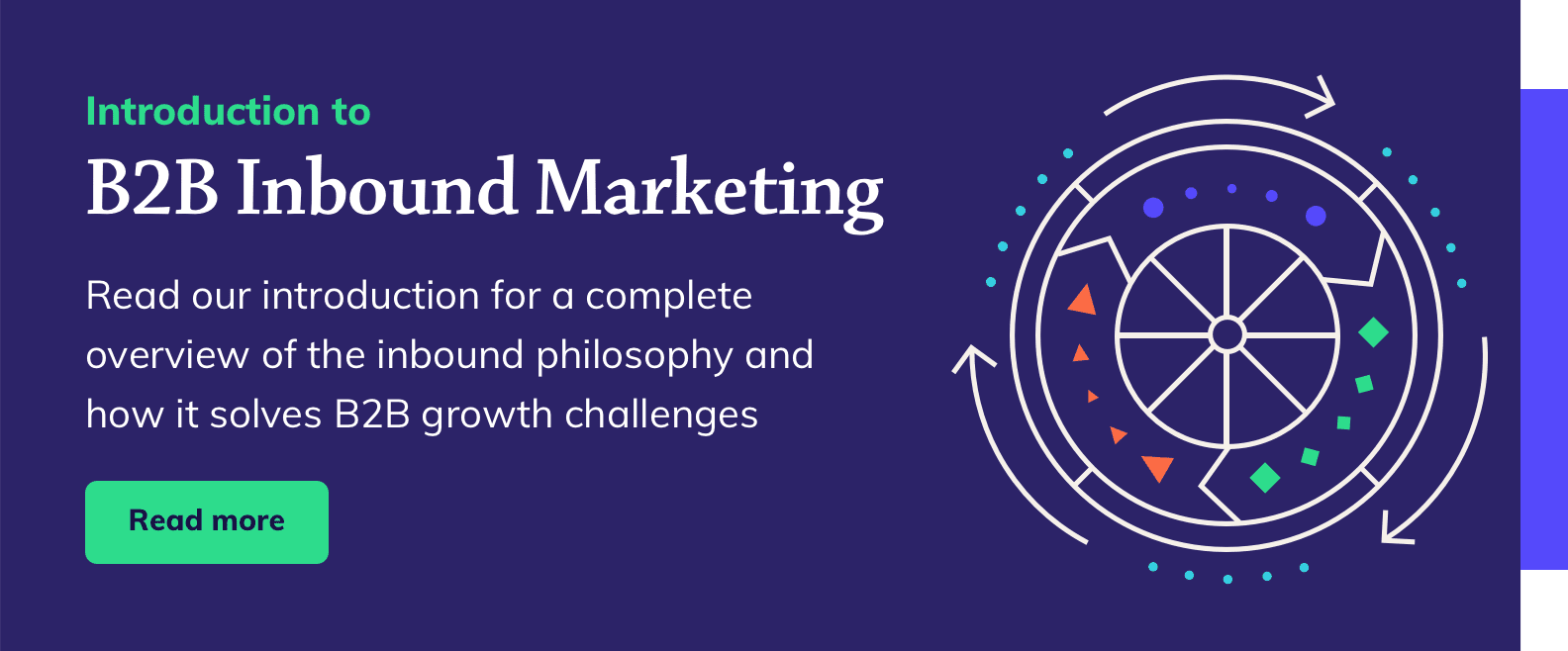B2B buyers now live online.
If you’re not found in a buyer’s discovery process, you’ll be excluded from the sale opportunity.
Marketing Automation software helps to solve this problem.
Marketing Automation as part of a strategy
As part of an inbound strategy, automation software tracks potential leads, nurtures them in bulk, and warms them up for the sale. It then grows a one-off purchase customer into a life-long delighted customer by continuing to up-sell, cross-sell and cycle-sell.
In a nutshell, marketing automation applications tackle both online marketing challenges and lead-generation objectives. They track, acquire and score leads with precision - and to scale - then nurture and transfer sales-ready leads to the Sales Team.
How do they do it?
First, they enable digital lead tracking. This identifies anonymous visitors by using cookies and storing relevant data by cookie ID. They can then apply IP reverse look-up to identify the company. When the anonymous visitor becomes known, the cookie history is associated to a lead record.
By tracking a searcher’s digital footprint, automation software can report on what content they’ve consumed, which search terms they’ve used, their role and buyer preferences, and where they are in their buying journey.
Then comes lead scoring and nurturing. The software will assign point values to a lead’s attributes and behaviour, measure how good a ‘fit’ they are, and score their inclination to purchase.
During the lead nurturing phase, a prospect will progressively receive informational and educational content, thereby engaging and advancing them until they are sales-ready.
When it’s time to pass a prospect over to the sales team, they’ll be receiving a well-developed persona, including demographics, online behaviour, history, and relevant links to content that’s been consumed. This saves time and allows them to concentrate on selling instead of researching.
One of the greatest benefits of Marketing Automation is the information gained from analytics, and the feedback received from a closed-loop reporting cycle. This is essential for continuous improvement and increased ROI.
The ROI of improved lead generation
B2B Marketing Managers variously estimate that 25-30% of leads are sales-ready when received; 40-55% are not (but around 80% of those will eventually become qualified through lead nurturing); and 25-30% of inbound leads will never convert. Automated nurture campaigns can therefore deliver just as many quality leads to Sales from the not-yet-ready group as from the sales-ready group.
This revenue opportunity used to go untapped when leads acquired outside of a nurturing programme languished, and were permanently lost. This is one of the high-impact benefits of automation that further increases ROI because the cost-per-lead when acquired one at a time is exorbitant.
Without marketing automation, companies throw money out the window by generating and qualifying leads that will never convert. With competition around every corner, and marketing budgets tighter than ever, it’s essential to invest where the greatest return on investment exists.
Conclusion
Marketing Automation is certainly no panacea. And it can only enable a predetermined marketing strategy. If there’s no strategy, there’s nothing to enable.
But, when properly deployed, it seamlessly integrates the previously unpredictable processes of lead tracking, lead scoring and acquisition, nurture marketing, and lead transfer.
By only sending sales-ready leads to the Sales Team, the software greatly accelerates revenue-cycle velocity.
Thus, in an online world measured in moments, marketing automation is seen as the new star of the company’s revenue stream.




